Photography by Jack Mac
By the time the most recent issue of your favorite magazine graces the newsstands or appears in the post, its pages were already well-imagined, copyedited, laid out, and finalized many months in advance. If we board our time machine, traveling to a time well before the issue was put together, we arrive at something akin to the Big Bang: the origin, a spark of inspiration, an expansion of words, ideas, and storyline. Perhaps that’s an overly dramatic description of a potential story idea appearing within the brain cells of a writer or photographer, but this aha moment is where an Overland Journal or Expedition Portal feature ultimately begins.
Like a precious stone that forms due to complex forces, a potential article idea must be refined to shine. This is where the pitch, or query, comes in. An article pitch is essentially how you “sell” your story to an editor. It should entice them, provide a detailed description of the proposed piece, and, potentially, include a bit about why you’re the person to write this story, gear review, vehicle feature, etc.
Whether through writing, art, photography, or a thousand other mediums, I believe everyone has a story to tell. Overland Journal and Expedition Portal specialize in storytelling, writing, and photography and are a good fit for those looking to share their vehicle-based adventure stories. If you’re keen to submit an article or photography gallery for consideration, I hope these tips will provide the tools you need to confidently submit the perfect pitch.
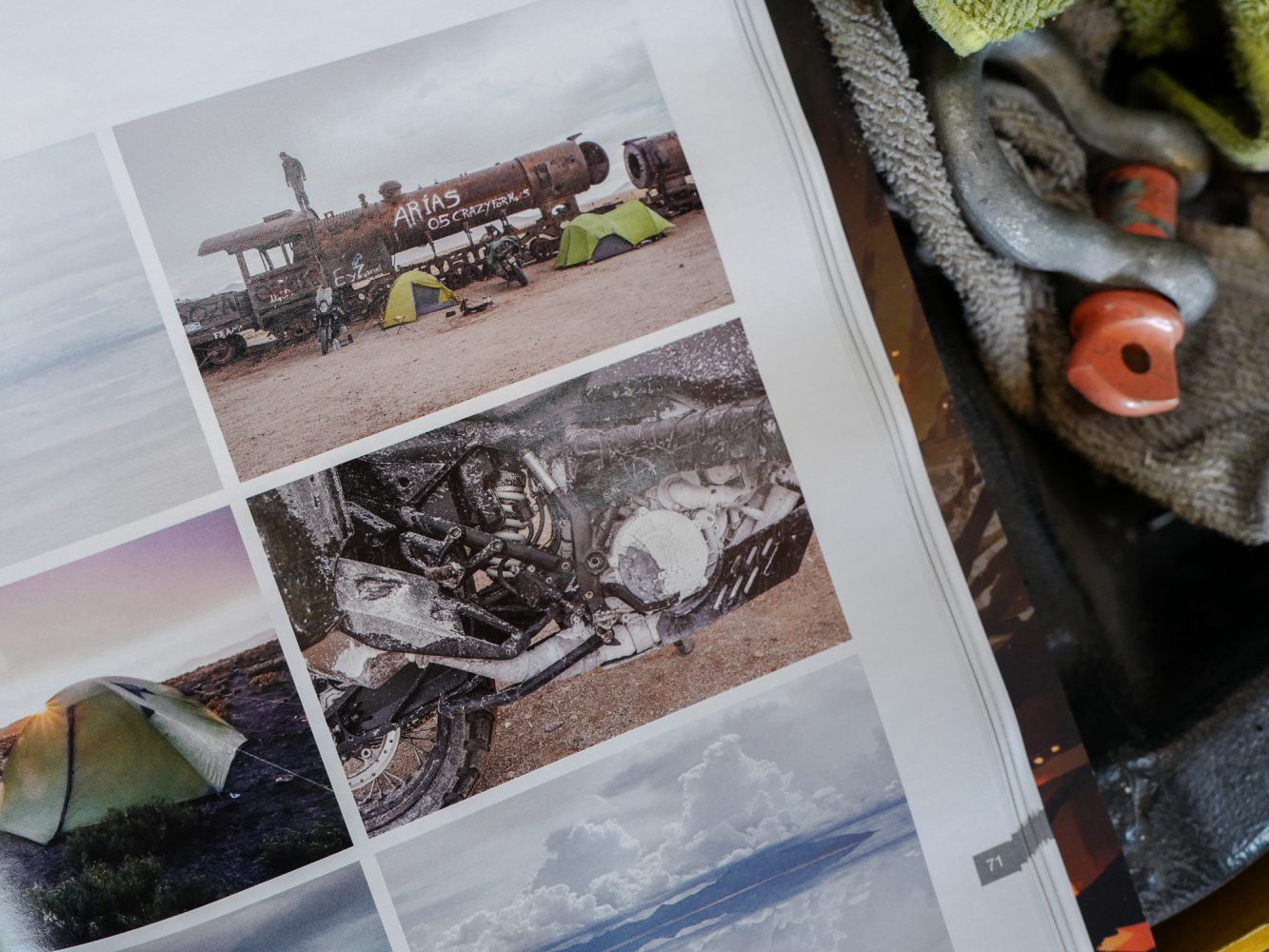
Do Your Research
Familiarizing yourself with your favorite magazine or publication is one of the best ways to create a stellar pitch. Notice the various articles, study the table of contents, and examine the masthead to determine the key players. Often located within the first pages, the masthead lists the magazine’s owner(s), officers, editors, and directors. Generally speaking, when a pitch comes in, Overland Journal’s publisher, editor in chief, designer, and senior editor(s) are the folks reviewing the story.
Read at least three issues of the magazine before pitching. If you’re on a tight budget, visit your local library or hop onto a library app in your region, as there are often back issues available to read for free. Overland Journal runs sales on back issues from time to time; there are currently a few issues available for $5 USD.
Reading multiple issues will bear fruit—the more intimate you become with a publication, the easier it will be to determine where your story fits. This research will also reveal the magazine’s audience. For example, a piece about fly-fishing might not be suitable for Overland Journal, but if the story is compelling and can be linked to vehicle-based travel—bingo! Meanwhile, your piece might be a fantastic fit for your favorite fly-fishing magazine; it all depends on the angle.
Overland Journal and Expedition Portal publish many different types of pieces. Are you passionate about good-quality gear? Do you enjoy photography? Perhaps camp cooking or long-form adventure storytelling lights you up. Figure out what excites you and start there.
Paying close attention to what is regularly published is key, but don’t forget to consider the out-of-the-ordinary—what isn’t being written about? What’s missing? Which story angles, genres, or themes aren’t on the radar? Those could be your golden ticket. Editors always appreciate a fresh angle, a unique take on a subject or place, or an out-of-this-world story.
Looking for types of Overland Journal and Expedition Portal articles? See Appendix A – Types of Overland Journal Articles (with links to published examples) at the end of this article for more.
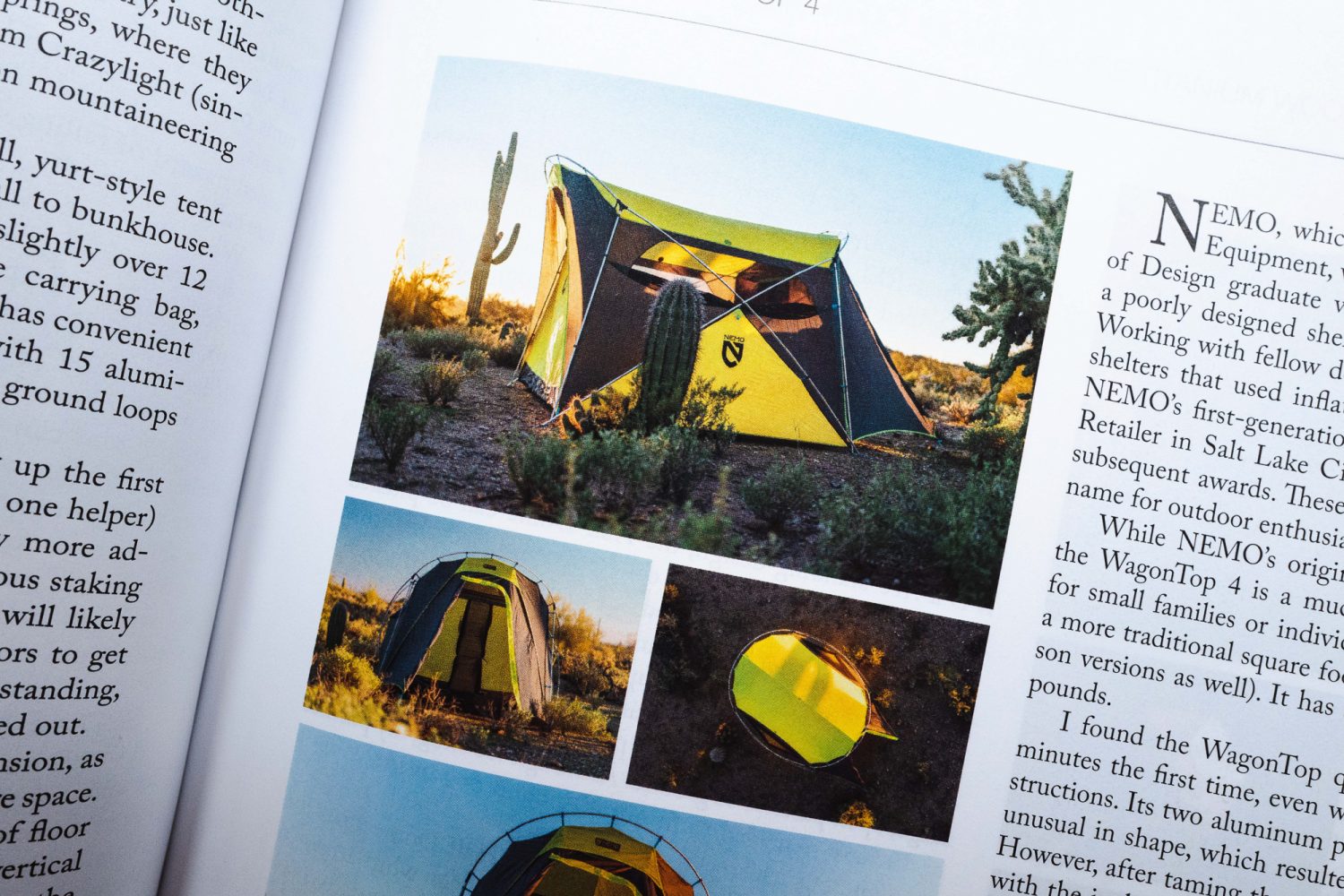
Tell A Compelling Story
Whether listening to a dramatic campfire story, watching an action-packed film, or reading a page-turner, it’s no secret that we are suckers for a great story. We possess an inherent desire to root for our heroes as they struggle, experience conflict, and (often, but not always) overcome whatever is thrown their way. Of course, your story doesn’t need to be particularly dramatic to be compelling. But it does help if the reader feels something while reading.
One of the most powerful lessons I’ve learned is to center storytelling around a theme, message, or takeaway. Intertwining a life lesson with a travel tale improves the writing and transforms your piece into more than just a play-by-play account of your trip. For example, in What the Dempster Highway Taught Us About Slow Travel, I focused on lessons learned during a specific section of the journey and how those lessons changed or impacted me personally while diving into the history and culture of a particular location, the Eagle Plains Hotel. A bonus: elevating the piece’s complexity made writing it much more interesting.
While a destination isn’t a story in and of itself (unless you are writing a Destinations piece for Overland Journal), it can be a significant player in your story. Locations become en vogue, and we see many pitches revolving around specific destinations; for example, Mexico’s Baja peninsula, Iceland, and Nepal have all been written about recently. Considering how many overlanders are currently on the road to Alaska and the Northwest Territories, I’m waiting for the onslaught of Dempster and Dalton Highway pitches.
If you want to write about places that have been previously featured, focus on a unique angle, and tell a compelling story. How will you know if the location has been thoroughly covered in the past? Google search the destination + “Expedition Portal” and “Overland Journal.” Plus, you’ll have insight because you’ve read at least three publication issues.
Remember, you don’t have to travel to faraway places to write a compelling story. Your backyard can set the scene for a wonderful tale, and Overland Journal editors are always looking for North American-centered stories.
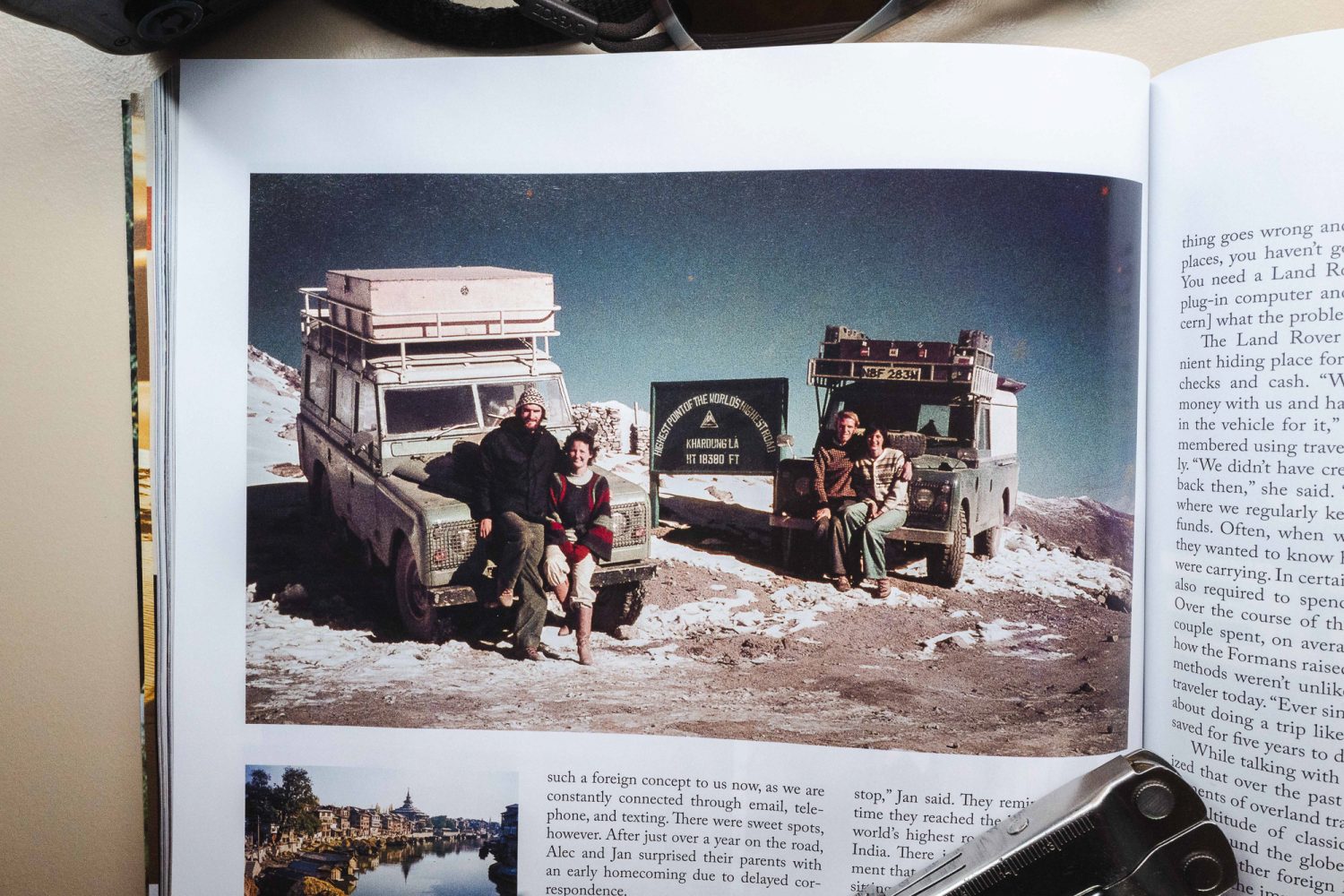
Pitching Tips from Overland Journal Editor in Chief Tena Overacker
- “[The perfect pitch is] one that is complete, including all materials requested.”
- “Avoid play-by-play accounts and overdoing the first-person narrative: I did this, I went there, I ate spicy tacos by the seashore, etc. Tell us a story.”
- “If covering a popular overlanding destination, spin it in a new way to avoid the old hat.”
- “Be respectful in your writing to the terrain you travel and the cultures you encounter.”
- “If covering a piece of gear, test all notable features in the field and relay your findings, good or bad.”
Elements of a Pitch
There are several elements you must include in your article pitch. For Overland Journal and Expedition Portal, these elements are set out clearly in the submission form at overlandjournal.com/write-for-us/.
One of the most essential features of a captivating pitch is the lead. Your lead paragraph is designed to entice the reader, hinting at what is to come without revealing all the details. Let’s be honest: our attention spans aren’t what they used to be, so grabbing the reader’s attention as soon as possible is important. The lead often contains details, a sense of place and time, tone, and, if done well, includes some sensory information (smells, sounds, tastes, descriptive scenery). Leads do not have to be at the chronological start of your story. The key is grabbing the reader’s attention with a compelling scene, making them want to read on.
The second paragraph contains more information about the proposed article, such as what you will cover throughout the narrative. It could also include more about you. Why are you a good fit for the outlet? Why are you the best one to write the article?
Here is an example of a pitch that was eventually published as a complete article on Expedition Portal: Jeopardy and a Jeep: Africa Conquered by Two Women Professors.
During the summer of 1954, Dorothy Rogers and Louise Ostberg pulled their Willys Jeep into a mechanic shop in Tripoli, Libya. The two American college professors had arrived from the North African desert, where they battled endless flats and ruined tire tubes in temperatures over 100 degrees Fahrenheit, their mouths dry and eyes bloodshot from wind that Rogers described as “liquid flames licking the face.” Between the sandstorms, unmarked tracks, and old trails, they often feared they were lost and more than once were quite sure of it. “Louise confessed that it was not so much the idea of being lost that bothered her as the remarks people would make when they discovered our bleached bones,” Rogers wrote in her travelogue Jeopardy and a Jeep. “Well, two women! What could you expect? The fools deserved their fate!”
In this piece, I will write about Rogers and Ostberg’s trip from Europe to South Africa, including insights into their daily life on the road in the 1950s and the impact of historical world events on their travels. This article will also describe the difficulties (and highlights) they encountered along the way, including language barriers, surviving a winter storm in the Pyrenees, a heat wave in North Africa, and the question of whether to purchase a pistol.
My passion for sharing travel stories originated from a 30,000-mile overland journey I completed with my husband, from Canada to Argentina in our well-loved but antiquated Toyota Pickup. The trip inspired me to investigate the history of women and vehicle-based travel, where I stumbled upon incredible stories from adventurers such as Barbara Toy, journalists Annemarie Schwarzenbach and Ella Maillart, and the Women’s Himalayan Overland Expedition of 1958. My writing has appeared recently in Overland Journal, Expedition Portal, and Tread Magazine.
For those pitching more technical articles such as gear reviews, it is helpful to include as much information about the product as possible (including links) and why you think it is worth reviewing. How could the product potentially help the overland traveler?
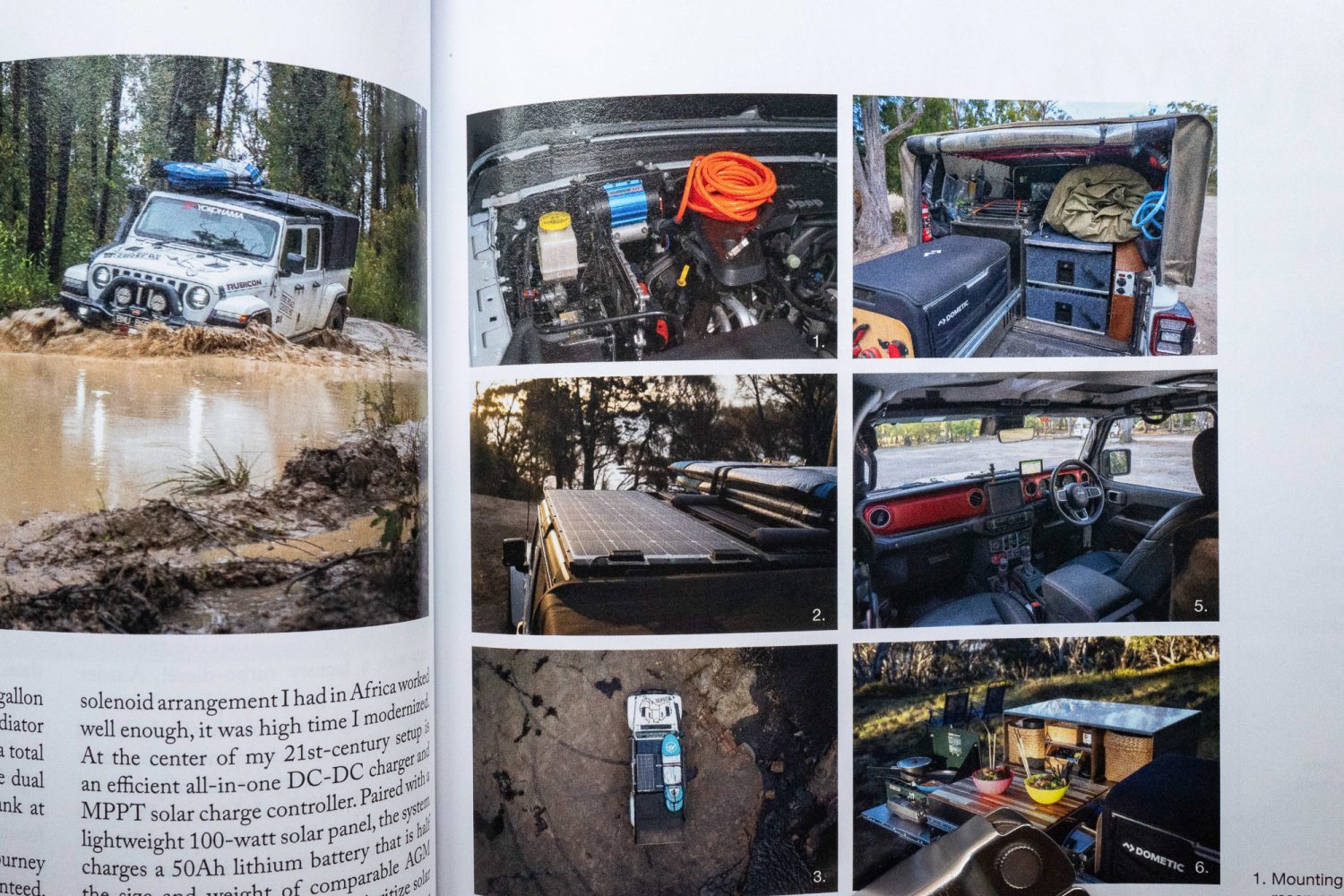
Here are some additional tips on writing a riveting article pitch:
- Paste the introduction to your article in the submission form at overlandjournal.com/write-for-us/, directly uploaded to Google Drive, or Dropbox, with sharing settings set to public.
- Time is of the essence. Editors are notoriously busy and don’t have time to comb through a long diatribe lacking focus. Be concise and straight to the point.
- Get your foot in the door by pitching a short article first. A well-written gear review, Tail Lamp, or Expedition Portal article can create trust and proves you may be up for a longer, more complex piece next time.
- You may submit your pitch as a complete package or in the format outlined above.
- Complete article queries, such as the one I outlined above, are only necessary for your first few pitches with an editor that is new to you. Yes, they are a lot of work but are incredibly helpful to both the writer and editor. Once you’ve developed a relationship with your editor and have proved your writing chops, timeliness, and excellent work quality (the proof is in the pudding, so to speak), the pitch exchange becomes increasingly informal.
- Proofread! Find someone to double-check your work. The free version of Grammarly can also help catch those pesky spelling mistakes.
- Don’t panic if you haven’t heard back for a couple of weeks. The Overland International team conducts editorial meetings twice a month. If you don’t receive a reply after three weeks, feel free to send a friendly follow-up.
- Overland Journal publishes five issues per year, each revolving around seasonal content. This means you won’t generally see snowscapes or wintery story features in the summer issue. The editorial team finalizes the Fall, Winter, and Gear issues during the summer months, so if your piece features seasonal content, it might not go to print until the following year. Expedition Portal is more flexible.
Photography
Imagery is an essential component of Overland Journal magazine. While writing can convey a story, so too can photographs. Remember that as overland travelers, the onus is on us to demonstrate proper Tread Lightly principles. This means no off-track driving, excessive roof loads, improper extraction techniques, etc. Read Tread Lightly’s Advertising Guidelines to learn more.
Overland Journal and Expedition Portal have published numerous photography articles with tips to improve your photography skills. Find the collection here: expeditionportal.com/photo/.
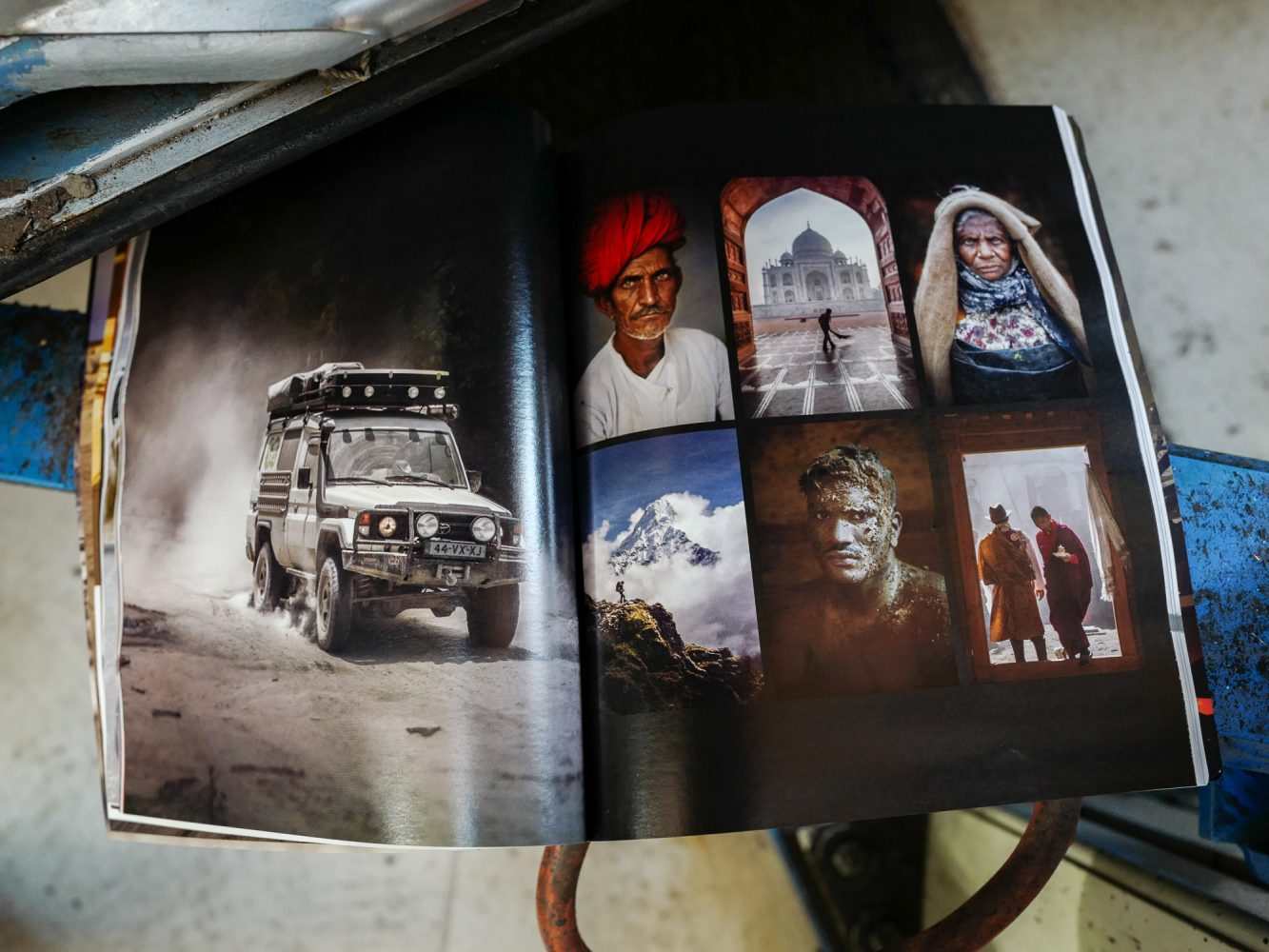
For Writers:
Not all writers are photographers, so many supplement articles with photos from others. This could mean you’re writing a feature about someone who supplies you with photographs; you could team up with a photographer or start with a Tail Lamp or Portal article while you brush up on the basics yourself. If you’re using photos that are not your own, ensure you have the rights/permission and can furnish the photographer’s contact information upon request. Whether for Overland Journal or Expedition Portal, we always provide photographer credit.
For Photographers:
Overland Journal’s Latitude or Photo Essay features might interest you if you are a photographer. These are multi-page spreads dedicated solely to stunning images that convey a strong sense of place, story, culture, etc. If you are a photographer looking to strengthen your writing, the Photo Essay is a great place to start, as this category includes a short introduction and brief but detailed photo captions.
For Writers and Photographers: Submitting Images
- Upload a folder link of your photo gallery to Google Drive, Dropbox, or weBoost, and set the sharing settings to public. Enter the link into the submissions box at overlandjournal.com/write-for-us/.
- Include photos you wish to be considered, and number them in the order they occur in the story. It is very helpful to include the prompts within the body of the article. (Example: Greenland 001, Greenland 002, Greenland 003).
- Expedition Portal images should not exceed 20 MB each.
- We require a selection of 75 to 150 photographs for Adventure/Travel stories and Latitude (5 MB minimum, 30 MB maximum per photo) and a selection of 30 to 50 images for everything else (2 MB minimum, 30 MB maximum per photo), except for Field Tested reviews.
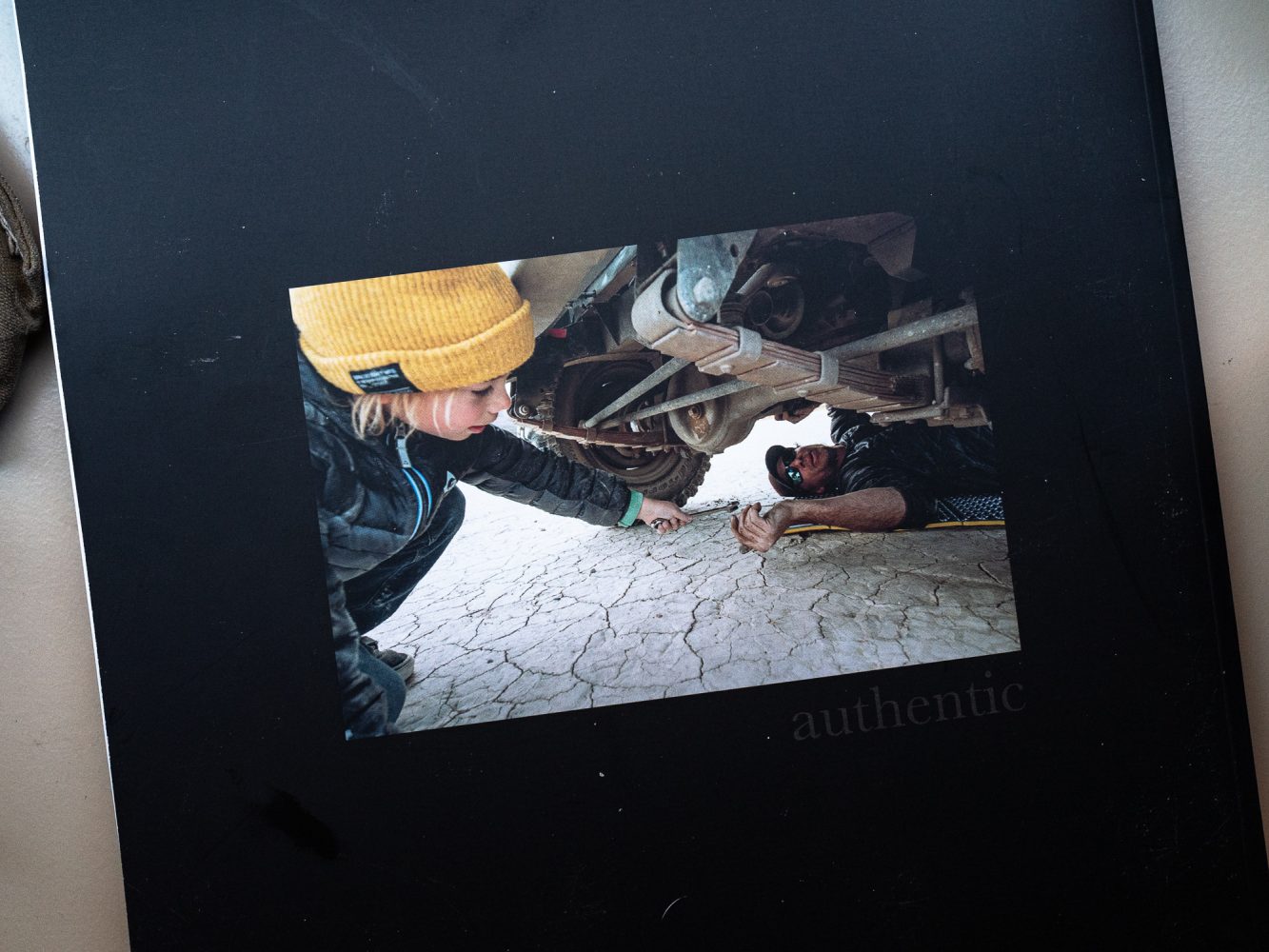
Photography Tips from Overland Journal Director of Design Stephanie Brady
- “Provide a well-rounded image selection. What did you see and do? What would others find interesting if they visited the area? (Provide images of vistas, different cultures, food, knee-deep mud, wildlife, a struggle you had on the trip, anything surprising, inclement weather, etc.).”
- “Doing something in the image is great (for example, digging out a stuck truck, climbing a cliff, interacting with locals, cooking a camp meal, etc.), but avoid the ’family vacation’ shots of you or others in your party looking and smiling for the camera.”
- “Close all doors when [photographing] vehicles.”
- “Steer clear of the stereotypical Instagram shots (i.e., hands up in celebration of the sun, lotus pose at the edge of a cliff, coffee mug in hand in the tent, etc. in favor of legitimate adventure photography—people doing real things).”

Travel Writing Tips
Like anything you want to improve at, writing requires practice, patience, and the occasional (or sometimes, more than occasional) glass of wine, whiskey, or therapist visit. Some days are easier than others. Some pieces are a slog, while others are a gift from the heavens. I am by no means an expert, but I have picked up a few things over the past few years that have helped move that blinking cursor across a blank white page.
- Read a lot (or as often as you can). Observe while you read: What do you like or dislike? Why? How does the author use description, dialogue, and imagery? What research has been done to support or strengthen the piece?
- Read about writing. Books such as Stephen King’s On Writing can be beneficial.
- Enroll in a writing course. Many universities and colleges offer creative writing and journalism courses. MasterClass or Coursera are good options too. These strengthen your writing skills in many ways, including adhering to deadlines, responding to constructive criticism, and having fun and playing with words in a low-risk environment.
- Show—don’t tell. Bring the reader into your world by describing rather than stating. Use the senses. Avoid words like “beautiful” and “awesome.” What specifically made it beautiful or awesome? Taking detailed notes during your travels can help with this.
- Be specific—choose ONE scene. Rather than recanting your journal of travel tales (“we went here, we did this, we went here, we did this…”), pick one impactful place, moment, or experience and expand on it.
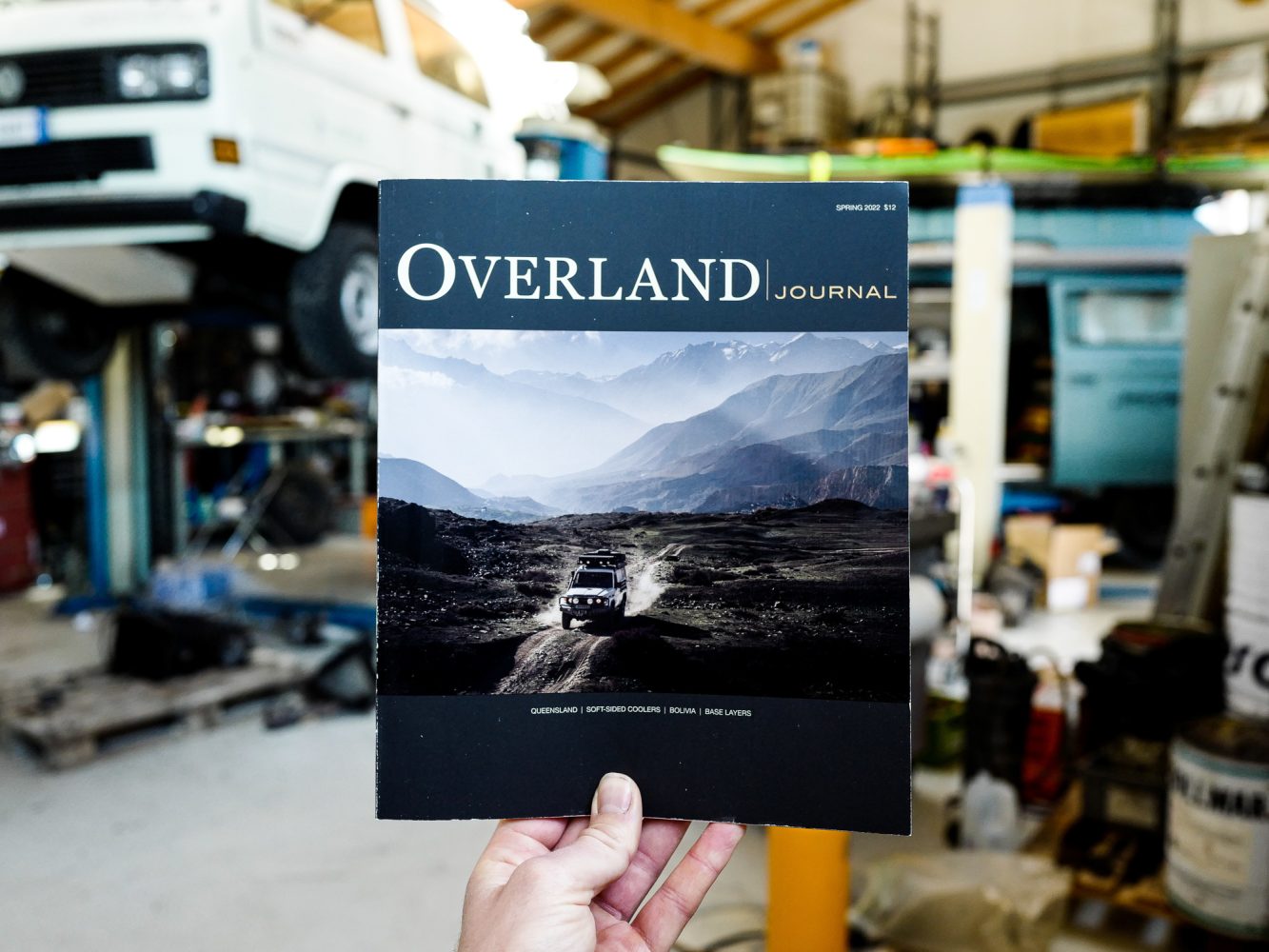
I hope this guide proves a valuable resource for those looking to pitch an article or improve their writing skills. The world of travel writing is vast, with endless books, podcasts, videos, and articles to read. If you are a first-time submitter or writer, it can be intimidating to hit the send button. But, your voice matters, and no matter what, you’ll learn something about writing, and yourself, along the way.
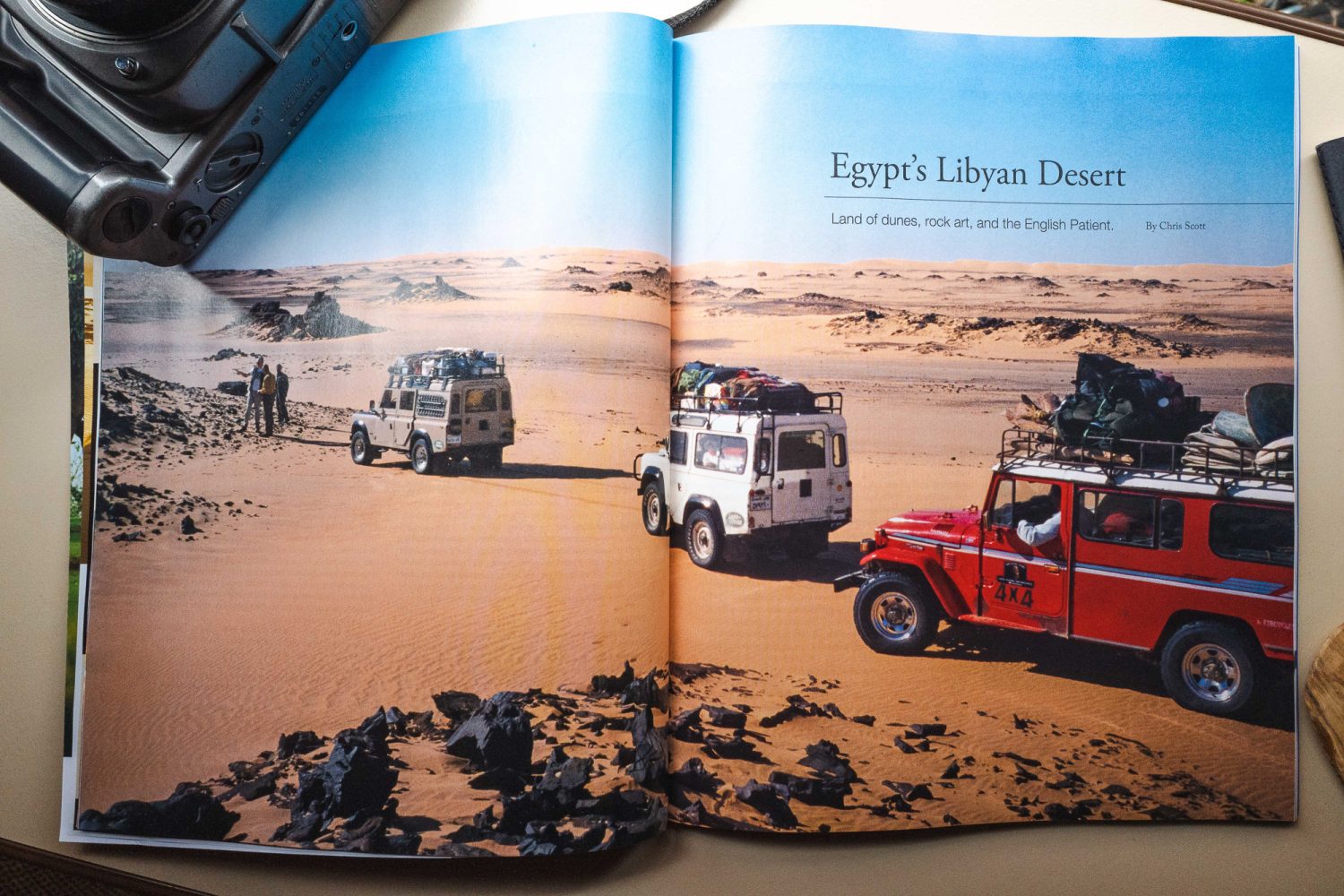
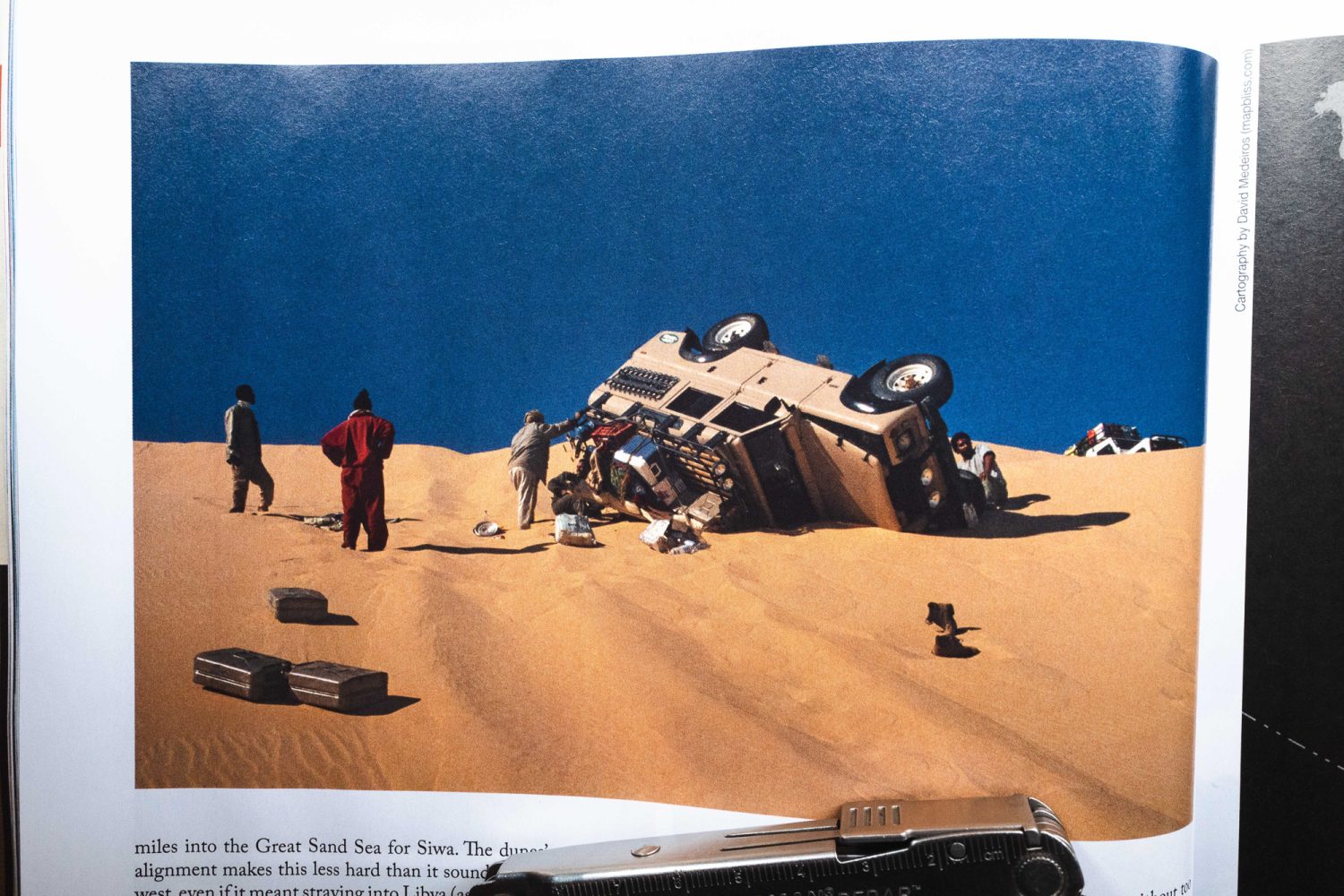
Appendix A – Types of Overland Journal Articles:
Best of Breed: Review or test of products across a category. Straight to the Point by Bryon Bass.
Classic Kit: In-depth detailed review of a historical piece of kit. The Pelican Case by Susan Dragoo.
OV Conservation: International or North American conservation efforts, humanitarian programs, overlanders involved on a local level, charitable fundraisers, worthy causes. Combat Flip Flops by Asa Bjorklund.
Destinations: Introduction to a geographical area, travel tips, places to eat, sights to see. The Faroe Islands by Lisa Morris.
Field Tested: Exploring the newest gear for overlanding. Garmin Tread XL Overland Edition by Matt Swartz.
Gear Callout: A collection of gear used together to create an ideal camp setup or a kit that includes multiple products. The (Gear) Call(out) of the Wild | By Rocky Donati, Tena Overacker (Gear 2022).
The Collective: Contributors share their high-level expertise on any given subject. Transforming Travels into Tales with Lois Pryce by Ashley Giordano.
Gear Reviews: In-depth, unbiased review of gear relevant to the overland traveler. Longer form than a Field Tested piece, Gear Reviews require testing procedures. The Best Overland Fridge Freezers by Scott Brady.
Historic: Gripping classic overland trek that is newsworthy and first of king (19th and 20th century). Land Cruisers of the Drug War by Michael Perez.
Humanity: People-helping-people stories. From Russia with Love by Heather Lea.
Interviews: Q&A-style interview of a living legend or up-and-coming modern explorer. Living Legends: Emily Miller by Lyn Woodward (Summer 2022), Modern Explorers: Chris Burkard by Jack Mac.
Latitude: World-class imagery of people, places, nature, overlanding, etc. Latitude by Jeroen Ott (Spring 2022).
Life on the Road: Short but informative collection of tips and tricks useful during travel. Moto Proven by Scott Brady.
Medical Column: Is there a doctor in the house? Practical medical issues for overlanders. Duration Health by Dr. Jon Solberg.
Overland Chef: Fine food for the traveler, practical applications, use of local ingredients. Campfire Paella by Michael Van Vliet.
OV Routes: A repeatable route for readers to follow. Complete instructions and information about a trail. Nova Scotia by Chris Cordes.
Photo Essay: Visual story of a particular location with photo captions. A Land Lost in Time by David Page (Spring 2021), A Land Sculpted by Death and Time by Karin-Marijke Vis and Coen Wubbels (Winter 2021).
Photography Column: Photography skills, product reviews, tips from the pros. What Camera Do I Need? by Lisa Morris.
Skills: In-depth teaching tool. Expands on a necessary skill for the overland traveler. Overland Skills: Travel Planning and Safety by Bryon Bass.
Tail Lamp: Short story about a travel experience—humorous, lighthearted, personal. A great target for first-time writers. Camp Fear by Graeme Bell.
Travel Features and Stories: Unique adventure tale: moto, 4WD, bike, or other. Last of the Igu by Antonia Bolingbroke Kent.
Feature Vehicle: Feature on a specific vehicle, including build-up and reasons for specified components. IVECO Daily 4×4: Marcus and Julie Tuck’s Overland Vehicle for Softies by Ashley Giordano.
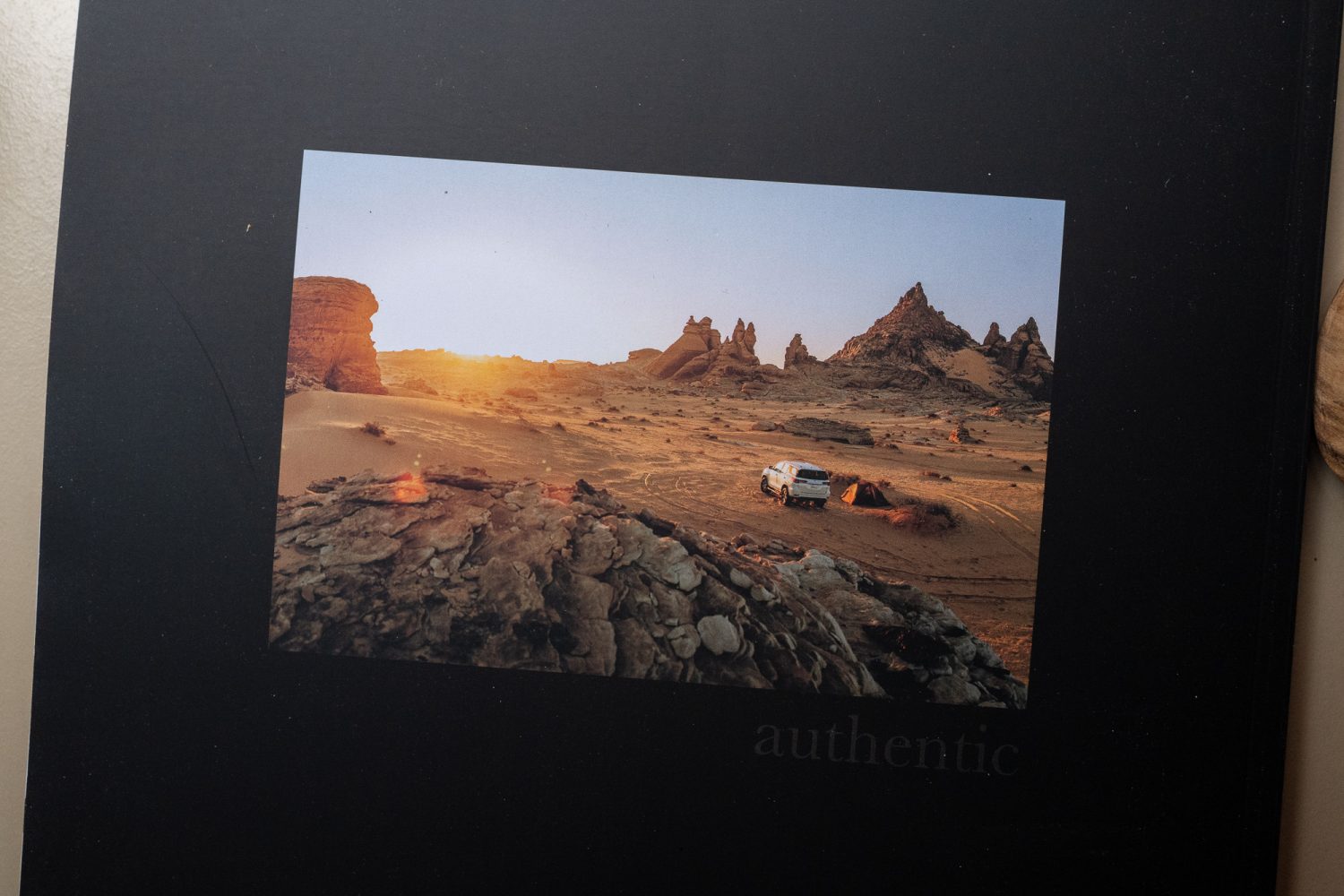
Our No Compromise Clause: We carefully screen all contributors to ensure they are independent and impartial. We never have and never will accept advertorial, and we do not allow advertising to influence our product or destination reviews.



